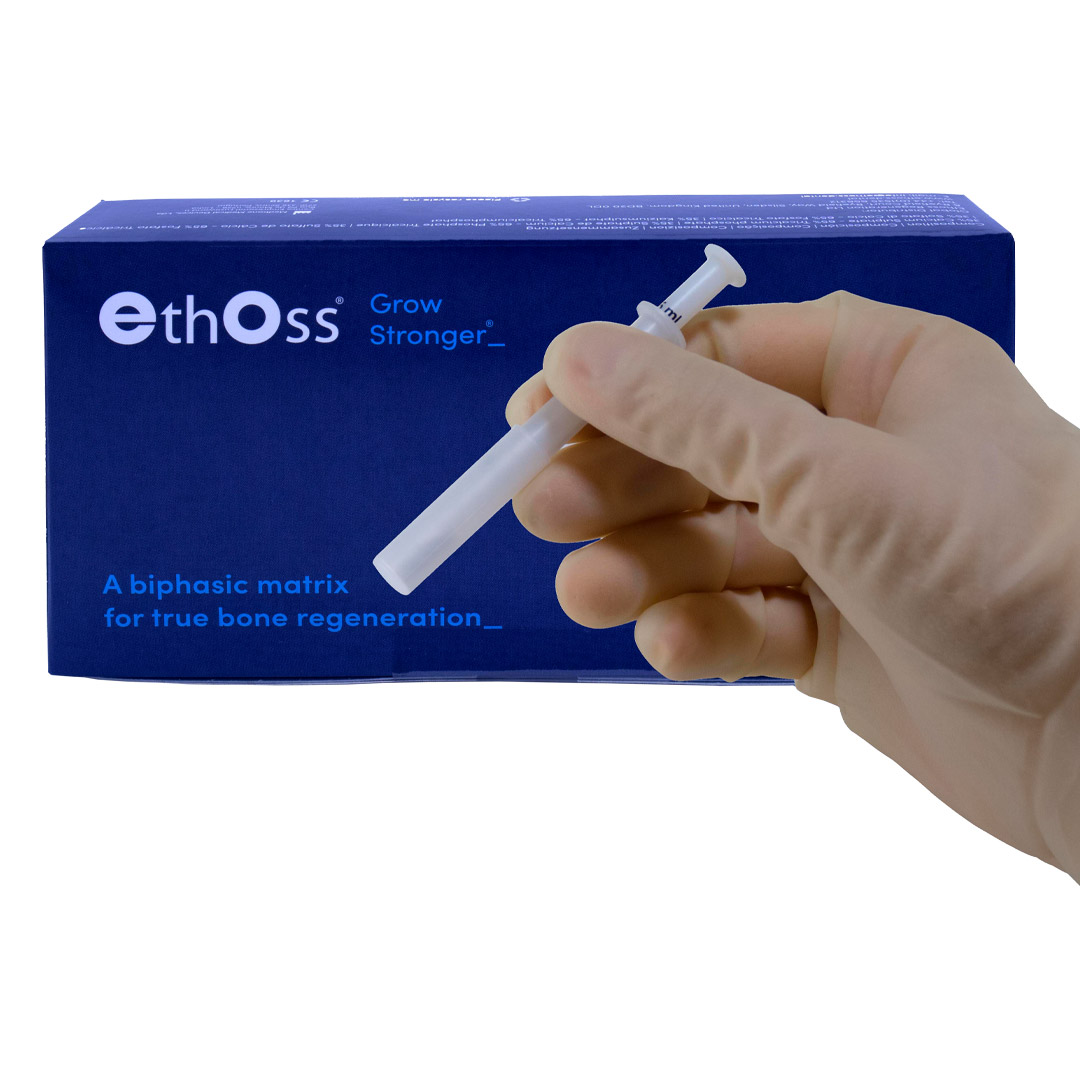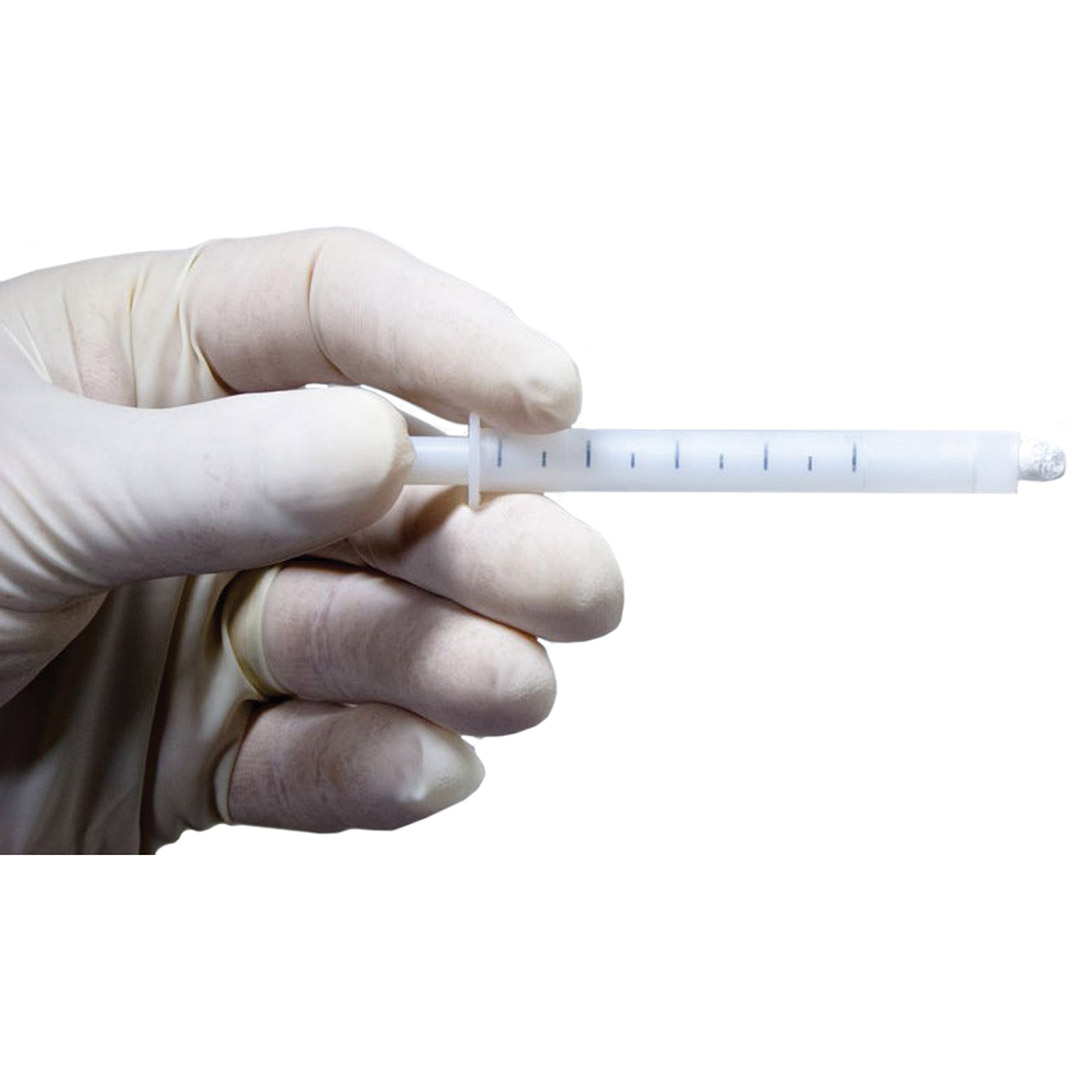| Brand | EthOss |
|---|
EthOss Bone Regeneration Material 0.5cc Syringe (3)
Login For Pricing
In Stock
EthOss’ innovative approach is a step forward in several ways:
Simpler
Its built-in calcium sulphate binder helps stabilise the graft and prevent soft tissue ingress, eliminating the need for an added collagen membrane.
Safer
EthOss is 100% synthetic. There’s no human or animal content, so no risk of cross-contamination.
Easier
EthOss comes in a handy syringe applicator, in two sizes – 0.5cc and 1cc. It’s easy to mix and quick to apply, and because it keeps its volume well, there’s no need for over-packing.
Stronger
EthOss is fully absorbed into the body, as it’s replaced by new healthy host bone – up to 50% in as little as 12 weeks.
Clinical applications
EthOss is intended to fill, augment, or reconstruct bony defects of the oral and maxillofacial region including:
> Infrabony defects
> alveolar ridge augmentation
> dental extraction sites
Trusted materials, innovative combination
EthOss is a combination of 65% ß tricalcium phosphate and 35% calcium sulphate. This innovative combination is key to its’ success.
Why ß-tricalcium phosphate (ß -tcp)?
ß-tcp has been used medically for many years and is widely researched and trusted, with several benefits which make it particularly suitable for dentistry:
> Full resorption in line with the rate of new host bone formation
> Osteoconductive
> High osteoinductive potential with a large research base in this area
> Patient preference – no concerns over donor tissue or cross infection risks
> All ß-tcp is not the same – EthOss uses the latest generation of ß-tcp
Why calcium sulphate?
The oldest recorded biomaterial, calcium sulphate has been used in surgery for over 120 years. Whilst it does not possess the same bone regeneration capabilities as ß-tcp, calcium sulphate brings one major benefit to the equation: it sets in situ, creating a stable graft with an integrated cell-occlusive barrier. This helps prevent soft tissue ingress, removing the need for a separate collagen membrane and giving the periosteum (and related blood supply) direct access to the graft site from day one.
















